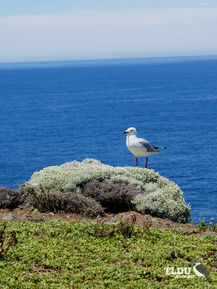
Shoppers Feedback:
Jan 17, 2017
Hello Ros,
I have now paid the invoice, but I would like to write to you just to say a big THANK YOU for getting me the Penguin!
The ChatterMate Penguin became a nice memory for me when I was in New Zealand, and I am so greatful to you for arranging so that I could have it! :-)
Thank you so much!!!!!!!!!!!
Regards,
Malin
Hi Ros,
Many thanks for your very kind email. I really appreciate your prompt reply!
I appreciate your advice regarding the decorations and customs. These are a gift for my daughter’s exchange student family so when she returns home on the weekend I will show her and see if she loves them as much as I do!
Thanks so very much again - I am truly grateful for your kind assistance.
Kind Regards
Bernadette
Ros,
Thanks again for the great customer service. It's a refreshing change!
Best regards,
Trevor
Hey Roz,
Thank you for your emails. Just loved my first order. The cute little Aussie bush critters are going to be used for an office Christmas decoration. My colleagues also liked them and talked about making an order to your site. I'll send you a photo when completed.
I'll be ordering more to send to my daughter's host family in America.
Fabulous service from you.
Kind regards,
Michelle
Thankyou. Order arrived today. One very happy grandson with his new beastly binoculars.
Regards,
Irene
- Home
- Wild Wonders
- Shop
- Aromas of Australia
- Australian Made
- Books
- Book Marks
- Christmas Decoration Sale
- Christmas Decorations
- Clocks
- Drink Holders
- Garden & Outdoor
- Gift Wrapping & Cards
- Home & Giftware
- Jewellery
- Keyrings
- New Products
- Pencils & Pen Holders
- Photo Frames
- Plush Toys
- Plush with Sound
- Sheepskin Rugs
- Stationery
- Stone Carvings
- Toys & Games
- Travel Goods
- Wedding
- Wild Figurines
- Wildlife Safety Products
- Wind Chimes
- Wine Charms
- View All Products
- Wildlife
- Australiana
- Explore
- Contact Us

Quick Facts
| Length: | 42 cm |
| Height: | - |
| Weight: | - |
| Colour: | White head, tail and underparts with a light grey back and black tipped wings. Bill, legs and eye ri |
| Habitat: | Almost any watered habitat |
| Food: | Worms, fish and crustaceans but has become a successful scavenger |
| Predators: | - |
| Status: | Secure in all states and territories in Australia |
The Silver Gull has a white head, tail and underparts, with a light grey back and black-tipped wings. In adult birds the bill, legs and eye-ring are bright orange-red.
The Silver Gull's colouration and its relatively small size easily distinguish it from the other two resident gulls in Australia. These are the Pacific Gull, L. pacificus (63 cm), and the Kelp Gull, L. dominicanus (58 cm). Some smaller vagrant species are found in Australia from time to time, but have distinctly different plumages to the Silver Gull.
The Silver Gull is common throughout Australia and is also found in New Zealand and New Caledonia.
The Silver Gull is found at virtually any watered habitat and is rarely seen far from land. Birds flock in high numbers around fishing boats as these leave or return to the coast, but seldom venture far out to sea.
As with many other gull species, the Silver Gull has become a successful scavenger, readily pestering humans for handouts of scraps, pilfering from unattended food containers or searching for human refuse at tips. Other food includes worms, fish, insects and crustaceans.
Silver Gulls nest in large colonies on offshore islands. Often two broods will be raised in a year, and both adults share nest-building, incubation and feeding duties. Eggs are laid in a shallow nest scrape, lined with vegetation.
With greater access to a wide range of dietary items, the Silver Gull has been able to increase its population in areas of human activity. Available nesting grounds appear to be the only limiting factor to population increases.
Last Updated: Thursday 9th January, 2014
BirdLife Australia - www.birdlife.org.au
BUSH e-TELEGRAPH
Signup for our monthly newsletter the "e-Telegraph"
Quick Links
Home | The Beginning | About The Land Down Under | Wild Wonders | Advertise on Wild Wonders | Christmas Decoration Sale | Christmas Tree Decorations | Drink Holders | Plush with Sound | Stone Carvings | Wildlife Wine Charms | Freebies | Australian Wildlife | Help Our Wildlife | Australiana | Photo of the Month | Explore The Land Down Under | Contact Us | Legal Notices

